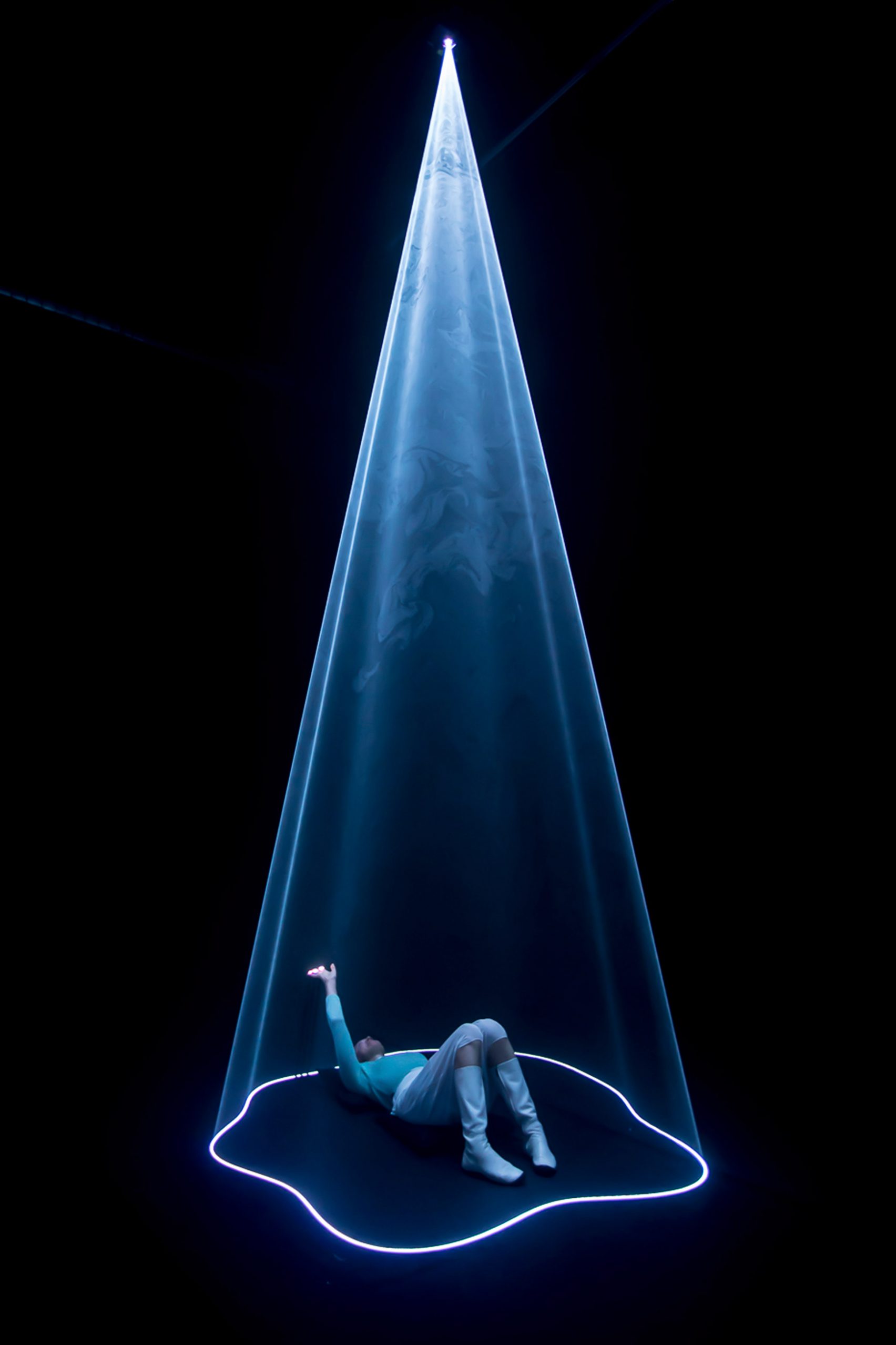www.dezeen.com: During this year's Dutch Design Week, visitors to the Aura installation were equipped with multiple biosensors that register brainwaves, heart-rate variability, and galvanic skin response.
As they sat or laid down on cushions on the floor, a musical composition played out in the background, triggering emotional responses.

4 comments:
This is one of the most incredible design installations I have ever seen. Light and media technology like this is the epitome of the future of art and art merging with science, in my opinion. Moving, technological installations such as this are popping up all around museums; there are even a few at the Carnegie Museum of Art down the street. I still can’t wrap my head around the simplistic and powerful nature of this installation. Despite the work and complexity behind doing an interactive experience such as this, it is presented in a beautiful and ethereal way that truly connects human emotion to each other more than people are used to. This kind of work could be used in psychology experiments or human interaction work as well, as it visualizes data into a tangible form. I hope artwork of the future continues to connect its viewers in this raw, emotional way, and that interactivity of this nature becomes accessible to the public all over the world.
I am fascinated by the applications science and psychology can have on the arts and theater.The use of neuroscience and advanced methods in this installation is fascinating, and the way in which it empowers the artist to convey emotions in a unique and novel way is impressive to say the least. The applications here inspire me to explore more crossroads between theater and other fields of study. In this day and age of constant innovation, we as artists should continue to advance with the sciences to be on the cutting edge of arts and entertainment. In the case of CMU in particular, I feel like we have a wealth of untapped potential for interdisciplinary work in theater and the sciences, due to our incredibly robust programs for both. And there is a crossover. My floormate is a neuroscience major and is in the process of writing a full musical with his roommate. Who knows what could happen?
Reading about this installation immediately reminded me about the psychological phenomenon called synesthesia, which is when the brain associates two different senses and correlates seemingly unrelated things-- such as assigning colors to letters of the alphabet or numbers to certain points relative to each other in space. To me, light and emotion go hand in hand perfectly in this way. I would love to experience this interactive installation firsthand, and to see what kind of colored lights surrounded me as I stepped into the various beams. After reading about this installation I was wondering about the countless possibilities this technology could be used for in theatre, and how it could be implemented in a show with heavy audience participation. I'm also curious about how this lightshow can be taken a step further and added other sensory experiences such as touch or even smell.
This installation was so cool. The way the light behaved like a sort of curtain and it changed color when it came into contact with your hand or other object was mesmerizing. It is also cool to see designs and art instillations integrate technology into them more and more. Technology was used for a purpose and the use of the biosensors really enhanced this instillation. It looks like it would be really meditative to just lay in one of those light bubbles and see the emotions that the sensor is picking up form you get transformed into light. It would be interesting to see how that specific algorithm interprets feeling with color because we don’t see your feelings attached to a color in real life. It is also interesting because you get to see the physical manifestation of the emotions of the people around you. You would get to see like “Hey that person is feeling purple”. This is an interesting way to qualify emotions.
Post a Comment